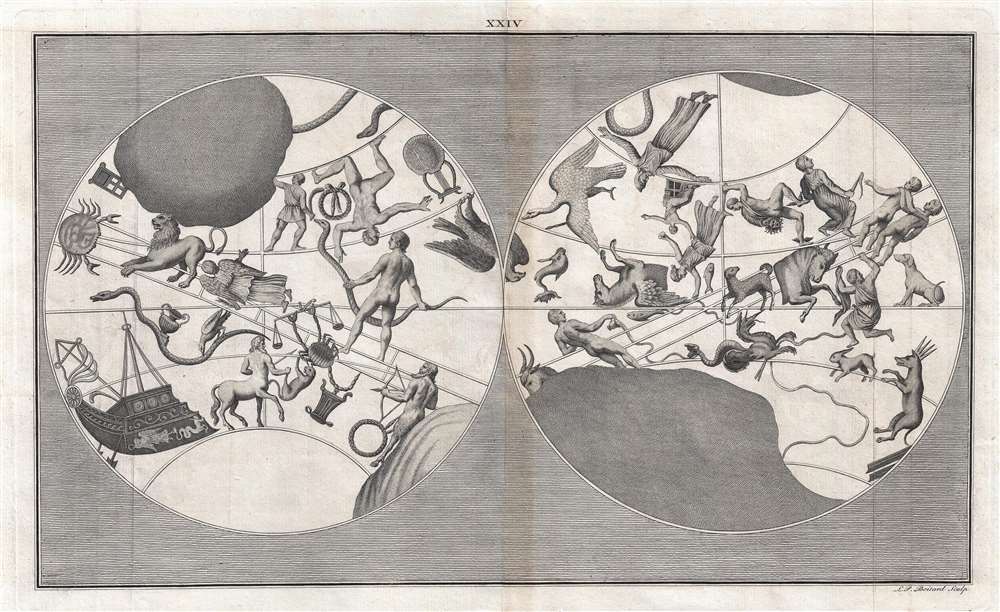This item has been sold, but you can get on the Waitlist to be notified if another example becomes available, or purchase a digital scan.
1747 Boitard Celestial Map of the Constellations from the Farnese Atlas
Celestial-boitard-1747
Title
1747 (undated) 12 x 20.5 in (30.48 x 52.07 cm)
Description
The Farnese Atlas
The Farnese Atlas is a 2nd-century AD Roman marble sculpture of Atlas supporting a celestial globe. It is considered the oldest extant statue of Atlas, a Titan of Greek mythology. Atlas was cursed by Zeus to hold up the sky. The sphere shows the night sky as seen from outside the outermost celestial sphere, with low reliefs depicting 41 (some sources say 42) of the 48 classical Greek constellations distinguished by Ptolemy, including Aries (Ram), Cygnus (Swan), and Hercules. The celestial globe supported by the Atlas is itself the oldest known representation of the celestial spheres and classical constellations. The sculpture is at the National Archaeological Museum of Naples, in Italy.Publication History
This is one of 41 plates, not all celestial, that Boitard prepared for the Polymetis. The Polymetis attempted to reconcile classical art and mythology. It was published in 1747 by R. Dodsley. It was an influential work, treasured by such luminaries as Thomas Jefferson, among others.CartographerS
Joseph Spence (April 28, 1699 – August 20, 1748) was an English historian, literary scholar, and anecdotist, who spent the majority of his life traveling throughout Europe. During these travels, he wrote many of his most distinguished pieces, and received inspiration for other literary works and lectures he went on to give at Oxford. Alexander Pope became a life-long friend to Spence and heavily influenced his work. Due in part to this friendship, Spence was elected the Oxford Chair of Poetry in 1728, and went on to become a professor of modern history at Oxford in 1742. After publishing Polymetis, Spence used his profits to fulfill his love of gardening, and he continued to produce literary works (both published and unpublished) until his death. More by this mapmaker...
Louis-Philippe Boitard (fl. 1733 - 1758) was a French-born engraver active in London during the middle part of the 18th century. He was born in Paris and relocated to London with his father François Boitard (1670 – 1719), a baroque painter, as a young man. Boitard mastered engraving under the tutelage of Raymond Lafage. His most notable work is the compilation and engraving of 41 plates in total for Joseph Spence's Polymetis. At the time of his death he was based in England. Learn More...

